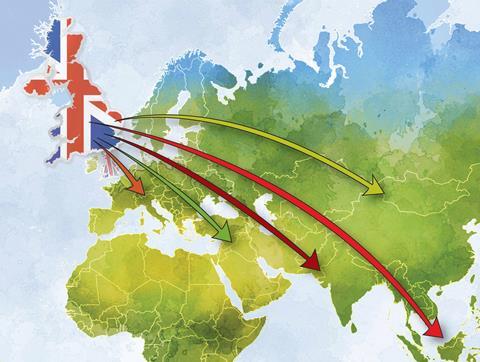
Exports of British food and drink were up 8.5 per cent during the first half of 2017, according to new figures from the Food and Drink Federation (FDF).
Exports to the EU grew at a faster rate than to non-EU markets, while sales of branded products outperformed non branded. Ireland, France and the US were the top three export destinations but growth was recorded in all markets, except Spain and Japan.
The three export markets that saw the greatest percentage growth in value in H1 were South Korea (+77 per cent), China (+35 per cent), and Belgium (+39 per cent).
While the fall in the price of the pound had helped to boost UK exports, this currency weakness has also led to an increase in imports and has resulted in the UK’s food and drink trade deficit increasing by 16 per cent to -£12.4 billion in H1 2017.
“It is great to see such strong growth in our exports to EU member states. The EU remains an essential market for UK exports as well as for supplies of key ingredients and raw materials used by our industry,” said FDF director general, Ian Wright.
“We believe there are significant opportunities to grow our sector’s exports further still. The continuing weakness of sterling is a concern. However, we hope that with the determination of businesses and the assistance of government, we can open more channels and provide a further boost to the UK’s competitiveness on the world market.”
Food minister George Eustice MP said: “These encouraging figures show that the UK’s high quality foods and high standards are sought after around the world.
'We have ambitious plans to produce and export more of our fabulous foods around the world and more businesses are trying exporting for the first time.'
Elsa Fairbanks, director of the FDEA, said: “Our core markets in the EU and North America are showing healthy growth and is something we should protect and build on in the months ahead.
“Asian markets have also seen impressive growth and this is clearly a region we should turn our attention to further as exporters in the future.”



